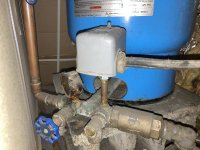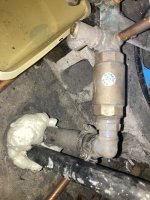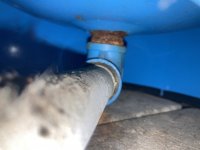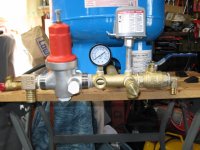yNotry
Member
Hi Everyone,
I really need help! All my faucets and toilets are spitting and growling air. I have a Gould submersible pump (replaced 2+ yrs ago) in 100 ft well with Well-X-Trol 202 pressure tank and 40/60 psi controller. Water supply hasn’t been a problem - filled 1700 gallon pool in 3-4 hrs earlier this year and years prior. Had a TON of rain throughout summer. The problem started happening over a month ago. I followed instructions from other posts on this forum: turn off pump breaker, open all taps to drain pipes, left them open, checked tank pressure (was 22 psi), filled with air (to 37 psi), turned backed on pump breaker, letting faucets run until all air was gone and only water flowing. Everything was fine for 3 or so weeks. Then last week it started happening again. So I did the same steps as before. This time the tank was 30 psi so I raised it to 38. Then let the water run for 10-15 minutes after air bled out and only water flowing. Everything was fine for a day or two and now it’s back worse than before.
Any help is much appreciated!
I really need help! All my faucets and toilets are spitting and growling air. I have a Gould submersible pump (replaced 2+ yrs ago) in 100 ft well with Well-X-Trol 202 pressure tank and 40/60 psi controller. Water supply hasn’t been a problem - filled 1700 gallon pool in 3-4 hrs earlier this year and years prior. Had a TON of rain throughout summer. The problem started happening over a month ago. I followed instructions from other posts on this forum: turn off pump breaker, open all taps to drain pipes, left them open, checked tank pressure (was 22 psi), filled with air (to 37 psi), turned backed on pump breaker, letting faucets run until all air was gone and only water flowing. Everything was fine for 3 or so weeks. Then last week it started happening again. So I did the same steps as before. This time the tank was 30 psi so I raised it to 38. Then let the water run for 10-15 minutes after air bled out and only water flowing. Everything was fine for a day or two and now it’s back worse than before.
Any help is much appreciated!




